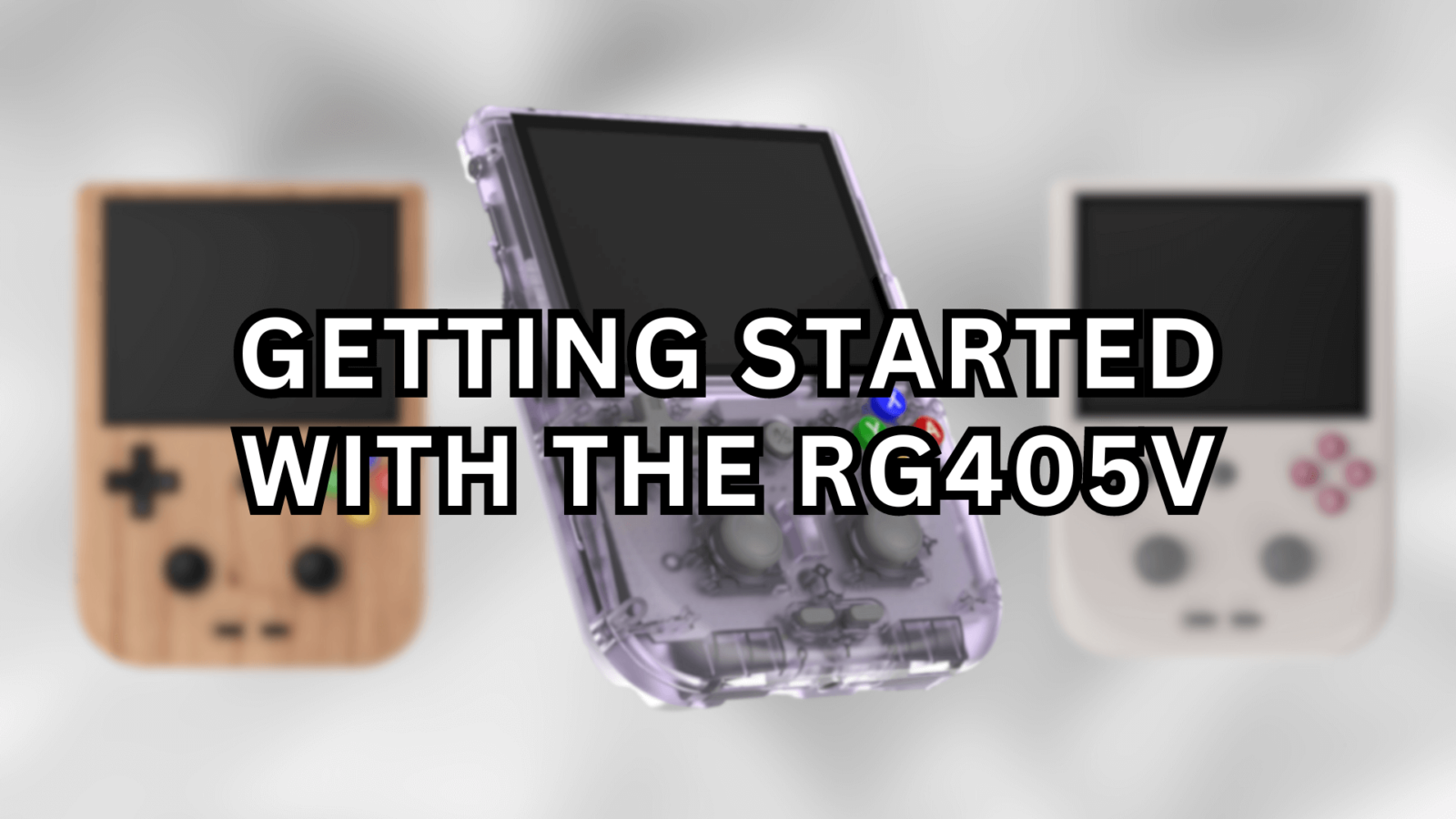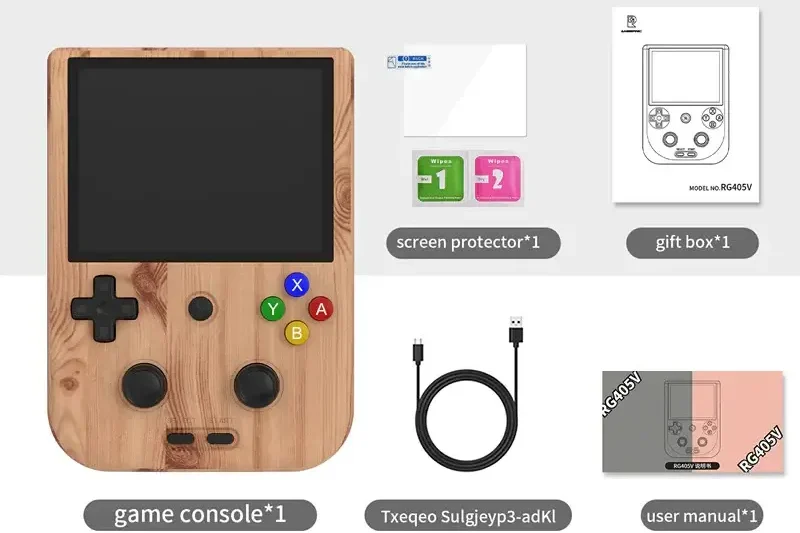You’ve made a fantastic choice with your new Anbernic RG405V! Welcome to the thrilling world of retro gaming, unlocking a universe of classic gaming nostalgia combined with modern technology. This device brings back the charm of old-school consoles but with modern-day performance. Our Getting Started guide ensures you make the most of your RG405V!
At DroiX, we celebrate and support the spirit of retro gaming. We also stand by the principle of empowering our users. So, if you find any issues and feel confident enough to handle them, we fully support your Right to Repair! With no effect on your device warranty! But remember, DroiX Customer Support is always happy to help with any queries or assistance you might need.
RG405V Setup
Let’s begin your Anbernic journey with the device setup. In this section, we’ll guide you through the hardware components, connections, and any additional information you might need while preparing for a modern-day retro gaming experience.
What’s Inside the Box?
When setting up your Anbernic device, it’s important to ensure you have all the necessary components and accessories for a smooth start. Additionally, please remember to check underneath the main compartment of the box, as all the other listed items are often placed there. Make sure to thoroughly inspect the entire box to find all the components you need for a complete and enjoyable setup experience. With your purchase, you should find:
- 1x Anbernic RG405V
- 1x USB Type-C Cable
- 1x Screen Protector
- 1x MicroSD Card (Storage)
- 1x User Manual
Device Overview
The Anbernic RG405V runs Android 12, all whilst powered by the UNISOC Tiger T618 processor and Mali-G52 MP2 GPU. Along with 4GB LPDDR4X RAM, this device provides a very good emulator performance. The Anbernic RG405V features many buttons and connectors, all of which are promptly labelled in the user manual. Notable ones include:
- 1x USB-C Port: allows for supplying power and connecting peripherals for expanded functionality.
- Function Button: quick launch the RGLauncher, located on the left side of the RG405V.
- 1x MicroSD Card Slot (TF Slot): accommodates expanded storage or data transfer. Located on the left side of the device
- Home Button: This takes you to the home screen, located in the middle of the device’s front.
- 3.5mm Headphone Jack: for wired headphone support, located at the bottom of the device
- Power Button: power on/off device, located on the right side of the RG405V.
What To Do
Before embarking on your retro gaming journey, you’ll need to get your device set up and running. We’ll walk you through each essential step. We aim to make the setup process as smooth and hassle-free as possible, allowing you to focus on the excitement and nostalgia of retro gaming. Follow these simple steps, and you’ll soon be reliving the golden era of gaming.
Charge Device
It is crucial that the first thing to do is to fully charge your Anbernic device. You can do this by plugging your RG405V into a charger or another device via the USB-C cable. The USB-C Port is located at the top of your device (refer to Device Overview above).
A complete charge ensures that your device won’t power off unexpectedly during the initial setup, which can include vital checks and configurations – such as calibrating the device’s battery. This initial charge sets a strong foundation for the battery’s long-term health and efficiency, aligning with the best practices for preserving the device’s longevity.
Insert MicroSD Card
Next, let’s prepare your device’s storage. You’ll need to insert the MicroSD card into the TF slot, which is conveniently located on the left side of the device (refer to Device Overview above). This MicroSD card is where all your data will be stored, so make sure it’s properly secured. With your storage in place, your device is almost ready to whisk you away into the world of retro gaming.
Power On Device
Now, let’s bring your Anbernic RG405V device to life! Press and hold the power button to power your device (refer to Device Overview above). Keep in mind, that the first boot might take a bit longer than usual — this is completely normal and part of the setup process. Once this initial setup is complete, subsequent boot times will be quicker, getting you into games faster. Patience is key here; your retro gaming experience is just moments away!
Any Issues or Questions?
At DroiX we pride ourselves on our high level of customer service before and after sales. If you have any questions or issues with any purchase from us, please do contact us. We are here and more than happy to answer any questions and get any issues resolved as soon as possible.
Android OS
The Anbernic RG405V runs on the Android 12 Operating System, which means you’ll have access to a variety of apps and functionalities. This allows for much more customizability of your device, including access to the Google Play Store, sideloading capabilities, a modern UI, and multitasking capabilities. Ultimately, this makes your retro gaming device much more functional.
But before you can play, you will need to reconfigure your Anbernic. Don’t worry, it’s not as hard as it sounds! Let’s walk you through it now!
Android Setup
When you boot your device for the first time you will need to set up the device as if it was brand new. Simply follow the onscreen instructions and you’ll be okay! First, you will be greeted by a welcome screen, here you should select ‘Start Use’. This will cause the device to begin reconfiguration, which may take a short while – it took us around 3-5 minutes! Once configured, simply select tap on the screen or press any button and you should now be in Android OS.
Control Centre
Your Android control centre (or control panel) can be accessed by sliding down from the top of the screen, similar to how you would on a smartphone (refer to Image 1 below). Swipe down again to expand the control panel if needed (refer to Images 2 & 3 below). From here you can easily and quickly access and modify device options such as WiFi, Bluetooth, Mode Control, button keymapping and more.
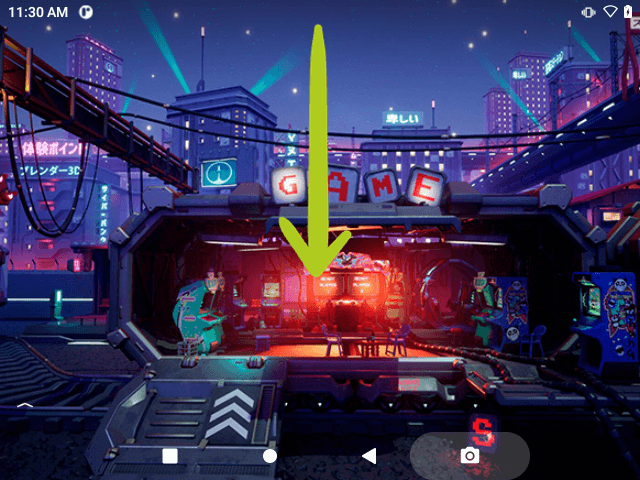
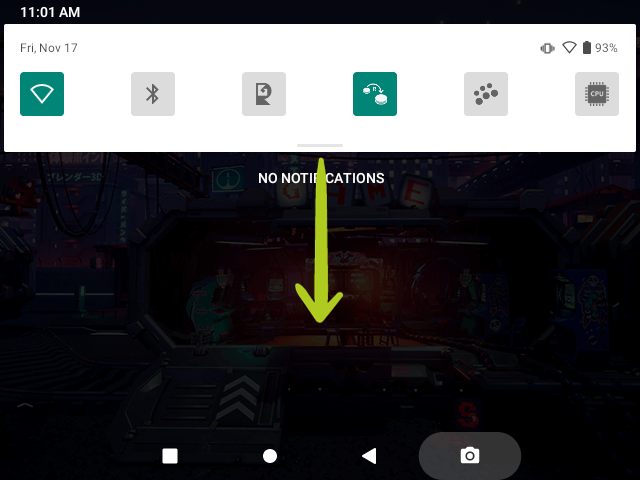
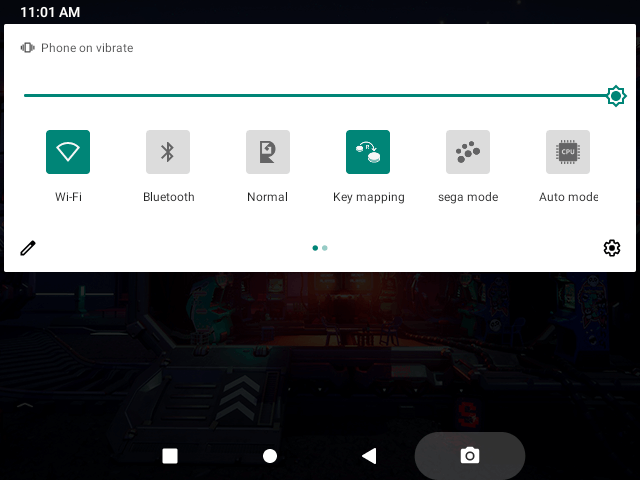
Wi-Fi Settings
To access and connect Network settings, open the control centre and hold you’re finger on the WiFi option (refer to Image 1 below). This will open the WiFi menu and show all the different available network connections. Simply select your desired network, and enter the password (refer to Images 2 & 3 below respectively).
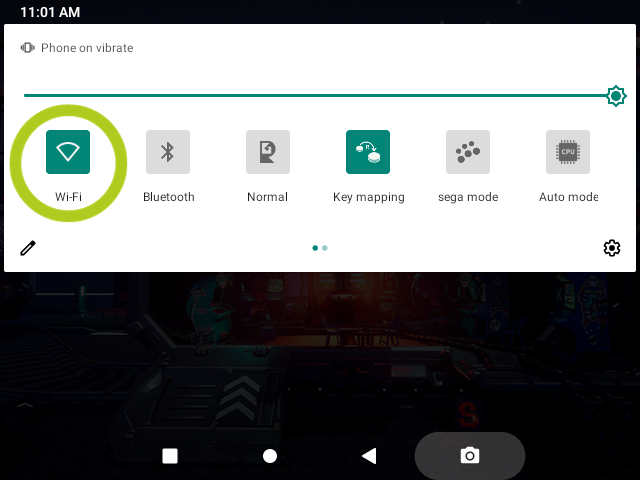
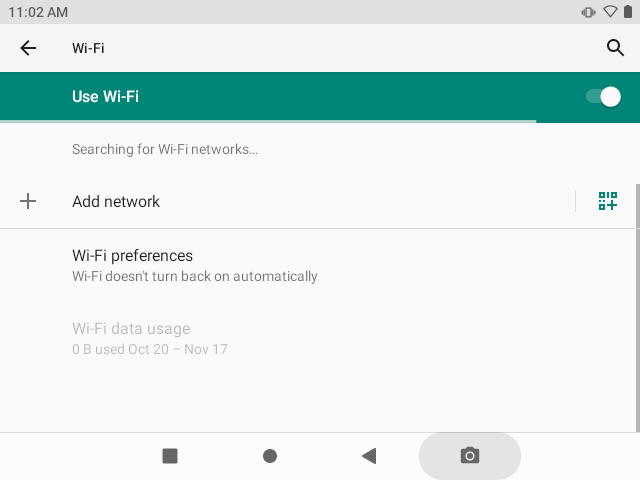
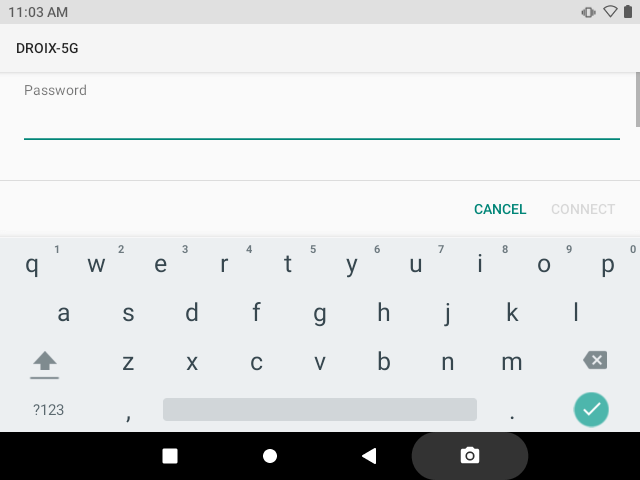
Quick Emulator Set Up – Jump Straight Into The Action
To quickly start playing games on your Anbernic device with minimal setup, simply press the Function button on your Anbernic RG405V (refer to Device overview above). This will bring up an overlay displaying a variety of emulators. Navigate through the emulators using the left and right buttons (or swiping) to find your desired option. After selecting an emulator, you will see a list of all compatible games available. Choose the game you want to play, and you’ll be launched straight into the action with preconfigured settings, ensuring a seamless gaming experience.
Alternatively, you can open the control centre, like before (refer to Image 1 below). Once open, there will be the option that has the Anbernic RG icon and is labelled either ‘Normal’ or ‘Game Mode’ (refer to Images 2 & 3 below). Tapping this will also open/close the RG Launcher.


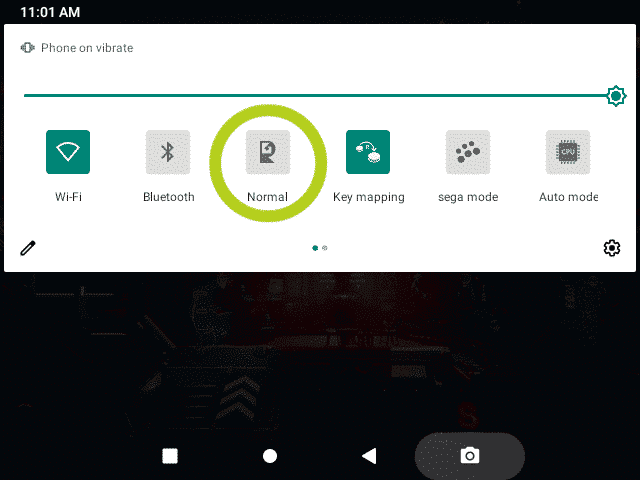
Manual Emulator Setup
For those who prefer more control and customization over their gaming experience, manually setting up each emulator on your Anbernic device is a beneficial approach. While this process takes a bit longer, it allows for greater personalization of both the emulator and the games. Although they are not set up, emulators are already installed onto the device. Each emulator may look different and vary slightly in its setup process, but they will all be similar.
We will use DuckStation, the PS1 emulator as an example below. Like on an Android smartphone, swipe left/right to navigate your apps. This is where all your installed applications, including emulators, are located. Now, scroll through to find the emulator you wish to set up and tap on its icon to open it. Typically, you won’t see any games listed initially. Instead, the emulator will prompt you to add a directory.
To do this, select ‘Add directory’ and a new window will open. Here, tap the navigation icon (represented by three horizontal lines) to access different storage locations. Choose ‘SD Card’ from the menu, which is the MicroSD Card that you inserted into slot TF2/EXT earlier. Now you need to navigate to the folder containing all the games corresponding with the emulator’s console. For example, for DuckStation (PS1 emulator), you will need to locate the folder with all your PS1 games.
After selecting the folder, press ‘Use this folder’ at the bottom of the screen. This will cause a pop-up asking for access to the device. Select ‘Allow Access’ and the emulator will then begin scanning the folder for compatible games. Once complete, the games should appear in the emulator’s menu, ready for you to play!
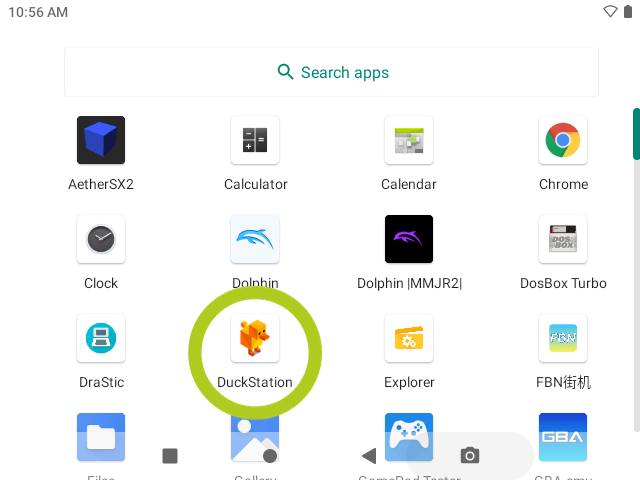
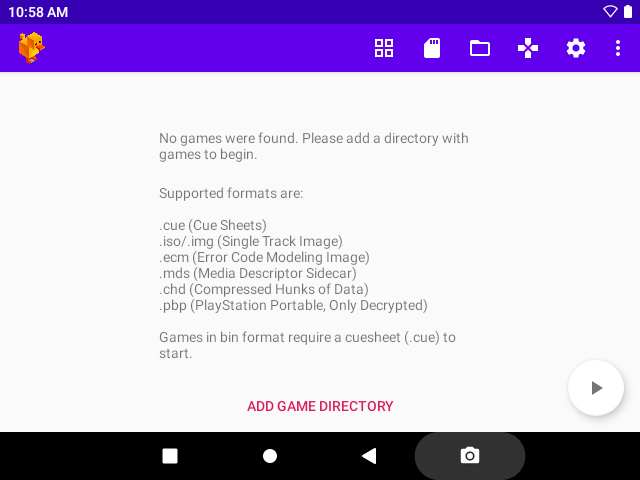
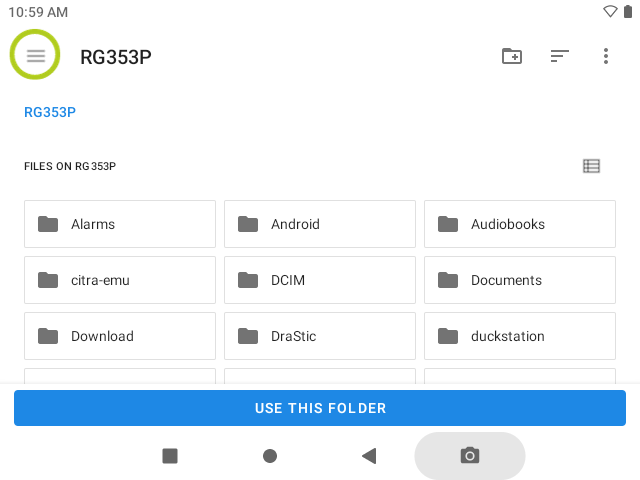
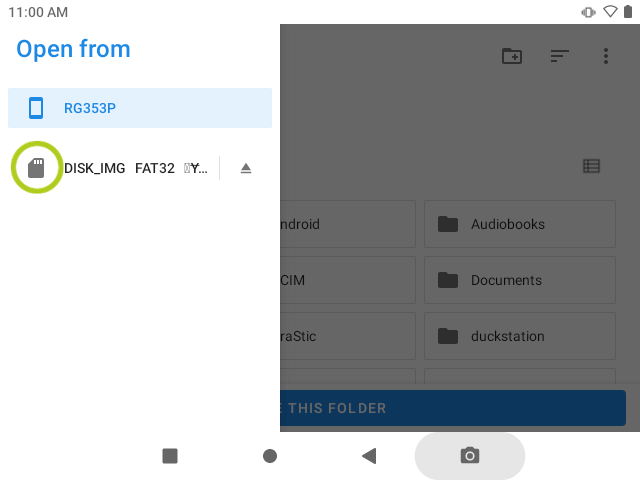
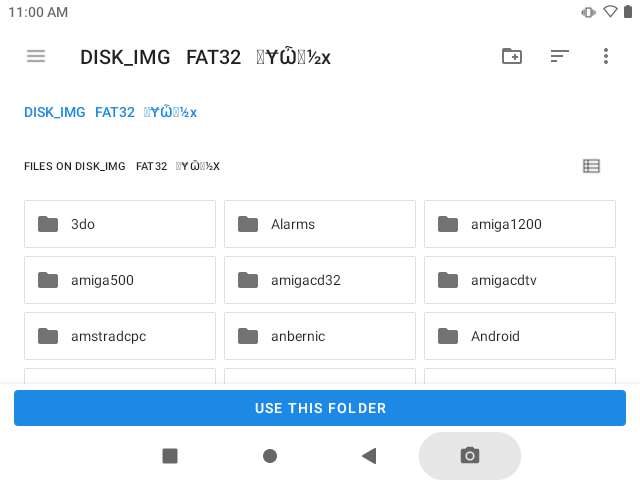
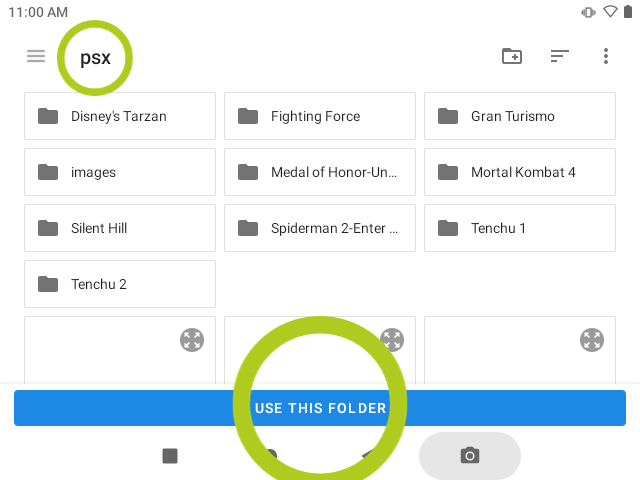
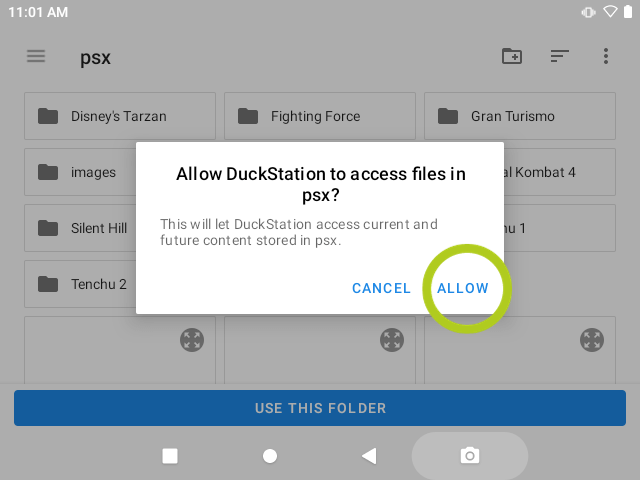
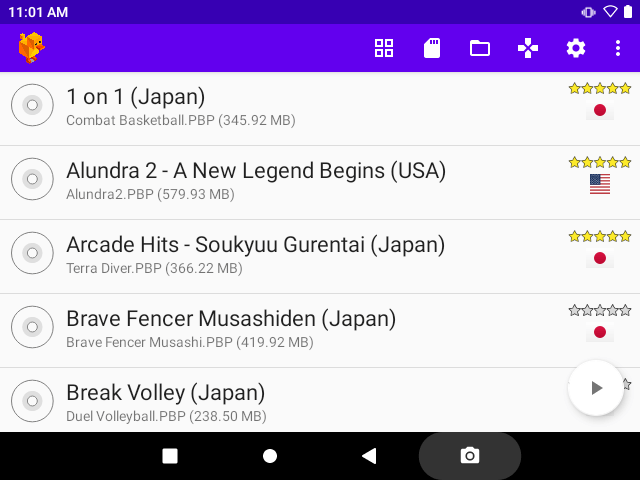
RetroArch Setup
Dive deeper with RetroArch! We’ve already created a detailed guide that covers everything you need to know about setting up and using RetroArch below. This guide is designed to simplify the process, ensuring you can easily access and enjoy a wide array of classic games whilst also going into depth on the more complicated parts of RetroArch. Whether you’re a seasoned gamer or new to RetroArch, our guide will enhance your experience, making it more enjoyable and seamless.
Installing New Games
For those eager to build their game library on the Anbernic RG405V, we have a detailed guide embedded right here for you. At DroiX, we do not preload or preinstall any games on our devices. Nor do we provide links to download ROMs However, we fully support your gaming passion by providing a detailed, reusable guide on how to add, install, and update games (ROMs) on your device. This guide is designed to be a universal resource for all our Getting Started device guides, ensuring you can set up and personalize your game library to your liking. Follow the instructions in the embedded guide to begin personalising a collection of games that cater to your unique gaming tastes and preferences.
Charging your handheld
Please refer to the included guide on the best practises for charging your handheld.


